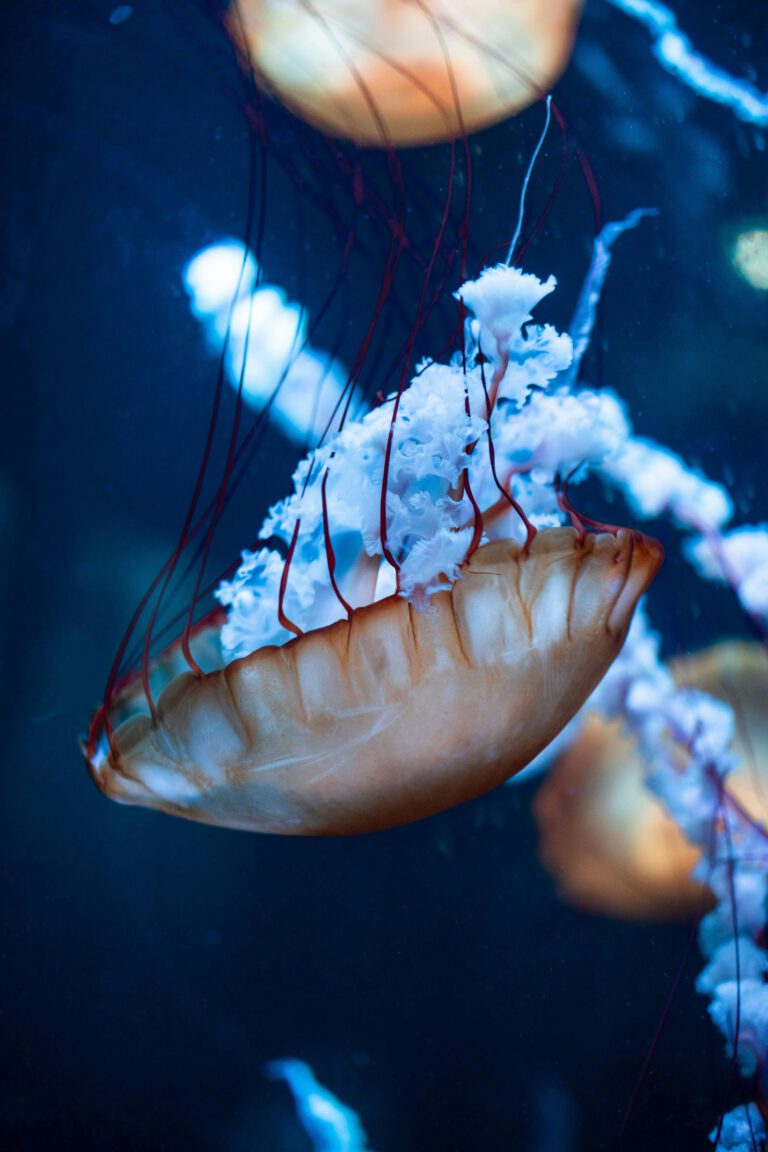Knotted Wrack (Ascophyllum nodosum)

Sugar Kelp (Saccharina latissima) - Suikerkelp
- Taxonomy: Knotted Wrack is part of the Fucaceae family. This group includes many species of brown seaweed commonly found along rocky shores.
- Appearance: Recognizable by its olive-brown color and knotted appearance. The plant has bladder-like air sacs spaced along its length.
- Habitat: Found in the North Atlantic Ocean. Thrives in intertidal zones on rocky shores, especially in sheltered areas.
- Growth: Slow-growing, with each frond reaching up to 2 meters in length. Can live over 15 years, making it a resilient species.
- Ecological Role: Provides habitat and food for marine animals. Important for coastal ecosystems, supporting biodiversity.
- Commercial Uses: Used as fertilizer and animal feed. Popular in cosmetics for its nutrients and skin benefits.
- Environmental Benefits: Acts as a natural carbon sink. Helps reduce wave action, protecting shorelines from erosion.
- Conservation: It faces threats from climate change and pollution. Conservation efforts are key to preserving this vital seaweed.
Knotted Wrack: The Silent Guardian of the Shore
When you walk along the shore, the ocean’s edge teems with life, from tiny creatures to large plants. Among these is Knotted Wrack, a seaweed with air-filled bladders that help it float. This plant may not seem like much, but it plays a critical role in coastal ecosystems.
What is Knotted Wrack?
Scientifically known as Ascophyllum nodosum, is a sturdy brown seaweed. It anchors itself to rocks in sheltered, intertidal zones. This seaweed is well-known in the North Atlantic, covering shores from Canada to Europe. Its distinctive knotted structure helps it survive harsh conditions by absorbing the ocean’s energy.
Life of a Knotted Wrack
Growing slowly, it can live for decades. Each frond can reach up to two meters, creating shelter for small marine life. Many animals depend on Knotted Wrack, from tiny invertebrates to fish that find refuge within its branches.
Knotted Wrack and the Ecosystem
It is more than just seaweed. It provides shelter, food, and even helps stabilize the shoreline. By reducing the impact of waves. It protects coastlines from erosion. As a habitat, it promotes biodiversity, supporting various species in the delicate balance of the ecosystem.
Human Uses and Benefits
Humans have found many uses for this seaweed. Farmers use it as a natural fertilizer, rich in nutrients for plants. In the beauty industry, its extracts are added to skin-care products for their hydrating and antioxidant properties.
Conservation Efforts
Today, it faces new threats. Climate change and pollution impact its growth and survival. Protecting this species is essential to keep coastal areas healthy. Efforts to conserve Knotted Wrack contribute to broader environmental goals, helping safeguard our oceans.
Conclusion
Knotted Wrack is a small yet essential part of marine life. Its resilience, ecological role, and benefits to humans make it a valuable resource. Next time you see this humble seaweed on a rocky shore, remember its hidden importance. By protecting Knotted Wrack, we are also preserving the health and beauty of our coastal environments.






